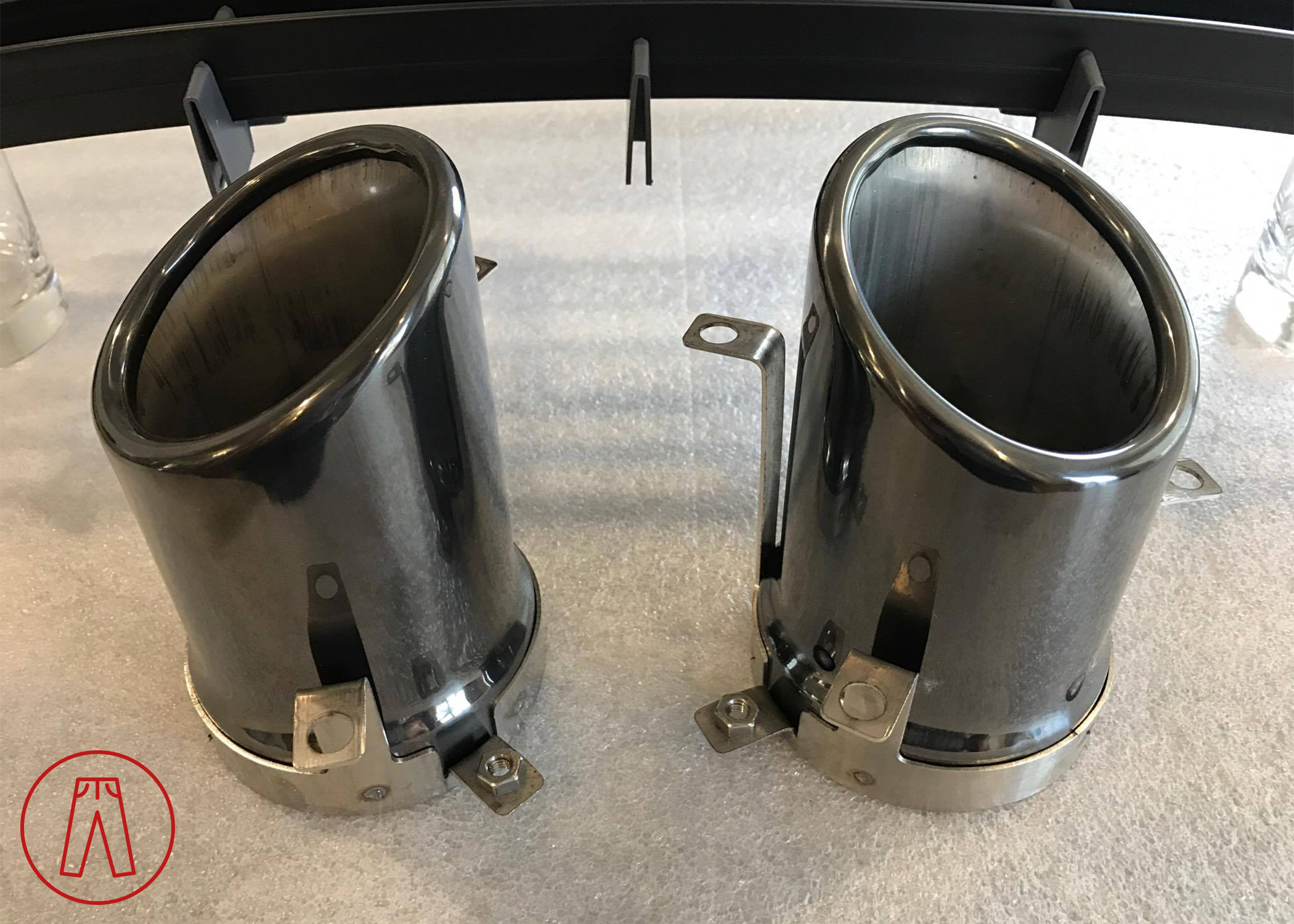
Blow It Out Your Tailpipe
DISCLAIMER
The information provided here is for general guidance purposes only. It is a combination of manufacturer guidance, first- and second-hand experience, and personal opinion. It may me inaccurate, incomplete, or outdated.
I’ve already got an Information Page about exhaust systems that goes over the various sections and things to know about them. I’m sure I’ll be repeating some of the information here, but I’ll be leaving out the vast majority of it. If you haven’t read through that page yet, it might be a good idea to skim through to get an idea of the various exhaust components since I’ll be discussing them here but not explaining them like I did in that Information Page. This Article is more about the subjective aspects of an exhaust, and specifically the story of the exhaust system on my grey 2007 V8 Vantage.
Of course, my car was built by Aston Martin with the standard (read: only) exhaust system available at that time. The original owner, however, had offered to test out some prototype parts with a company called RSC Tuning. When I bought the car later on, those parts were still on the car and included a set of high-flow cats and muffler.
Side note: The two guys behind RSC Tuning left that company a long, long time ago. I’m not sure where Herschel went, but the other guy is still around - it was Stuart, who went on to start VelocityAP. Yes, the Aston Martin world really is that small! I have no idea what became of RSC Tuning after they left as I’ve been working with VelocityAP ever since I bought the car and went on to sell VAP parts when I started Redpants.
Being early prototypes, the parts were definitely more function than form. They weren’t the prettiest things, but they were prototypes and the construction was a similar style as OEM so that can’t be faulted.
Fun fact: If you notice the positioning of the o2 sensor bungs, you’ll learn something interesting. Although the OEM catalytic converter is a “600-cell” cat, only about half of it is actually monitored. Notice the majority of the catalyst is located downstream (to the left, in the picture above) from the second o2 sensor.
As I mentioned in the side note above, I’ve never had any involvement with RSC Tuning. I did get a set of VelocityAP high-flow cats for my red V8 Vantage when I had that car, and they’re a much nicer looking product. But this article is about my grey car, and you can go check out my Build Page for my red one if you want.
Anyway, after having the car for 3 or 4 years, or however long it was, I bought a set of VelocityAP equal-length headers, which are pretty damn beautiful. Here’s one of them next to the OEM header.
The OEM header (top, in the pic above) may look like it has larger-diameter pipes, but that’s actually because those headers are double-walled. That is, the OEM headers are basically pipes-within-pipes. The piping itself is not visible unless looking inside the exhaust manifold. The outer “shell” is an extra layer that acts as both a heat shield and sound insulator.
The sound difference wasn’t obvious to me as the rest of my exhaust was already louder and drowned out any change. The heat was never an issue, despite a false assumption on my part. As of this writing, my car is undergoing a massive overhaul and I am getting the headers ceramic coated - but I did not have heat-related issues from the headers despite them not being coated or wrapped. Here’s how the headers came out.
The outside is coated with a Cerakote high-temp coating. I went with the matte black color to better match the black valve covers, black oil catch can, and other black areas of my engine bay. The inside is coated with Cerakote Piston Coat.
Overall, the sound from the VelocityAP headers, RSC Tuning prototype high-flow cats, and RSC Tuning prototype muffler were fantastic. Have a listen in the video below. I open it up toward the end, but “normal” driving is just as important to get a good idea of how an exhaust truly sounds.
I didn’t change anything with the exhaust for 5 or 6 years until I installed my GMR Supercharger Kit. Because the supercharger kit requires the use of GMR’s own high-flow cats, I installed those and set my old ones aside. I was incredibly happy with the sound of the exhaust, but life changes and so did my requirements for how my car sounded. Specifically, my car was too loud for how my life was changing.
I’m not a fan of obnoxious cars, be it visual styling (I’ll eat those words some day) or sound. And even though I don’t think my car was too loud, I was indeed black flagged during a track day at Road Atlanta during church hours. Granted, it’s easy to let off throttle when passing sound metering stations on a track, but I wanted to take my car to other countries that are far more strict than the US and didn’t want to deal with the hassle… so I decided to play it safe.
That’s right… I “willingly” made my car quieter.
Notice the quotation marks. Take my statement with a grain of salt and understand that doing a thing and being happy about doing that thing are not the same.
Moving on.
I wanted to make sure I wouldn’t have any sound-related issues with my car now matter where I take it, so I opted for VelocityAP’s quietest muffler. It does pain me to do it because I think the sound level just just perfect as it was, but I’ve gotta do what I’ve gotta do. I will say that just from a purely aesthetic point of view, it’s a huge improvement.
The VelocityAP Touring muffler looks physically much smaller than the RSC Tuning prototype muffler so it should be louder. But, much like pen… er… people… it’s not necessarily the size that matters. The magic of VelocityAP’s current muffler line is the X-pipe that’s inside the muffler canister itself. This X-pipe allows the exhaust flow to smooth out and, in turn, smooths out the exhaust note. The closer the X-pipe is to the engine, the more benefit it has. With the muffler being the furthest part of the exhaust system from the engine, the performance effects are reduced but it does still help with the exhaust note.
A last note about the muffler: You’ll notice it isn’t valved like the factory one (nor was the RSC Tuning prototype). I’m a big fan of simplicity in design and, while I do think valved exhausts are pretty neat, I prefer not having them. It’s a personal thing for me, that’s all. Plus the non-valved one costs less and I’m already spending enough money on this car lol.
Note: I’ll get a video clip to compare the RSC Tuning prototype setup and the GMR/VelocityAP setup once the car is back on the road. I’ve got a bunch of projects underway all at the same time, so it’ll be at least a few weeks from when I publish this Article. Stay tuned for updates!
The last bit of the exhaust is the tail pipe tips. These aren’t actually attached to the exhaust system itself - they’re attached to the bumper cover. The factory exhaust tips were chrome and I’ve since replaced them with the black Zircotech exhaust tips that came as part of the Exterior Black Pack. They’re more of a black chrome than an actual black. It’s a subtle difference and honestly I’d prefer to have them either darker black but still shiny, or go with a wrinkle black as a second choice. As they are, they just seem a little too much like they’re dirty despite that being their actual color. They’re not obvious regardless, though, so I don’t think it’d be worth the effort to change them up right now, especially given how much work is going into everything else already.







